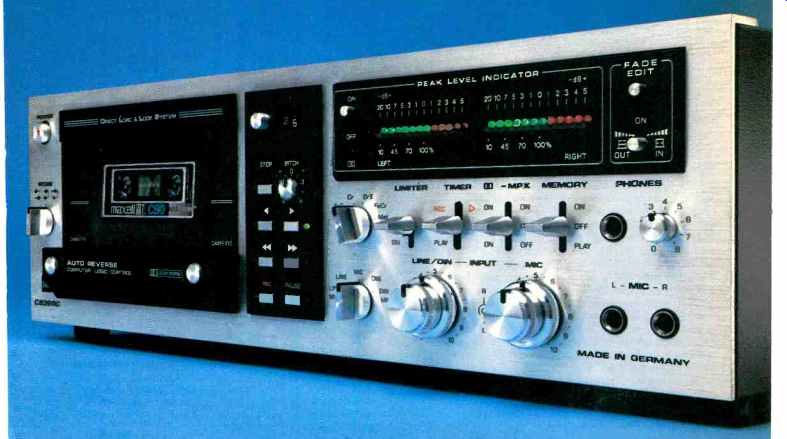Consider what it would be like to own the new Dual 839 cassette deck.
The new Dual 839 is so different from all other cassette decks that, rather than list its many features, we'll guide you through them as if the 839 were in front of you.

First, the 839 is bi-directional. In record and playback, the tape reverses automatically and stops at the end of the second side. This doubles the length of every cassette. (Reversing can also continue indefinitely if desired.) You'll notice there's no door between you and the cassette compartment. Just a shield over the tape heads that swivels away when you switch on. Insert a cassette and it will lock in precise alignment. That's Dual's Direct Load and Lock system. (A subtle but important touch: any slack in the tape is immediately taken up.)
Follow us carefully on this next one. Even when the tape is in motion, you can pull it out and replace it with another ... and the previous mode resumes automatically. Useful? When the tape nears the end, you can have a new tape in place without missing a beat.
Here's another innovation in playback. If a tape made on another deck is too sharp or too flat, or if you need to match pitch to a live instrument, no problem. Playback pitch can be varied over an eight percent range.
And previously recorded tapes with clicks, pops and disc jockey interruptions can be cleaned up electronically-smoothly and permanently. Dual's fade/edit control lets you do that with complete confidence, because it functions in playback.
The peak-level LED indicators react faster than any other metering system. And more accurately, because they're equalized. They read the full processed signal including the high frequency boost other decks add but only Dual reads. No more risk of overloading a tape into distortion.
There's still more. Much more. Full metal record and playback. 6-way bias/ equalization. Computer logic solenoid-activated controls. Switchable multiplex filter.
Switchable limiter. Line and mic mixing. Two-way memory stop with automatic replay. Headphone level controls. And operation by external timer or optional wireless remote control.
Among the features you can't see are the two-motor, twin-capstan drive system and the electronic tape-tension sensor that guards against jams and spills.
What about the 839's audible performance? The specifications can give you a hint. Wow and flutter ±0.03 percent WRMS. Frequency response from 20 to 20 kHz, ±3 dB. Signal-to-noise better than 69 dB.
Of course, there's a price for all the 839 offers: $850. If that seems to be more deck than you really need, there are three other new Dual cassette decks. They start at $330, and they all feature the Direct Load and Lock system, DC servo motors, twin-belt drive systems, tape-motion sensor/protectors and equalized meters.
For complete details on all four Dual cassette decks, please write to us directly.
United Audio, 120 So. Columbus Ave., Mt. Vernon, NY, 10553, USA.

= = = =
Also see: Dual 819 cassette deck (Dec. 1978)